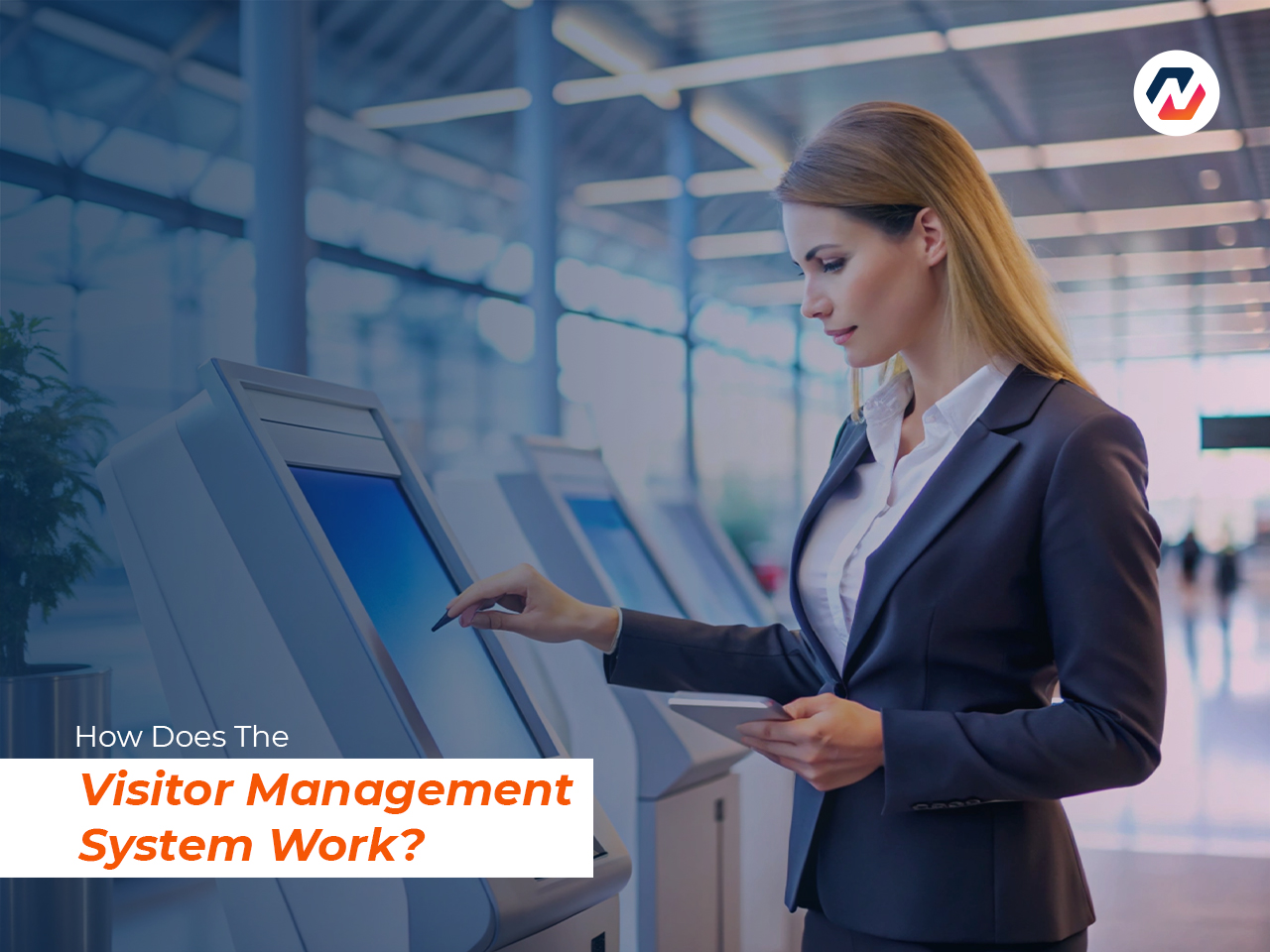Maria Shoukat2025-02-10T13:52:14+00:00
Table of Contents
ToggleIntroduction to Visitor Management Systems
Visitor Management Systems (VMS) are digital solutions designed to manage the organization’s check-in, check-out, and tracking of visitors. By integrating a VMS, companies can streamline entry processes and enhance security, improving the experience for both visitors and staff. In this article, we discussed about How Does a Visitor Management System Work?
Why Businesses Need a Visitor Management System
Importance of Security
Organizations today face numerous security challenges. A VMS minimizes security risks by tracking who enters and exits the building, reducing unauthorized access.
Efficiency and Convenience
A visitor management system automates many tasks, such as check-ins and visitor notifications, saving time and reducing the workload on reception staff.
Key Components of a Visitor Management System
Visitor Registration
Visitors enter their details online before or at a kiosk upon arrival.
ID Verification
A VMS can verify visitor IDs, cross-referencing with pre-set criteria to ensure safety.
Badge Printing
Visitor badges with specific access permissions can be printed, enabling easy identification within the facility.
Real-time Notifications
Hosts receive alerts when visitors check-in, ensuring prompt acknowledgment and guidance.
How Does a Visitor Management System Work?
Step 1: Pre-registration
Visitors can register online before arriving, entering their details and verifying their identity to speed up check-in.
Step 2: Self-Service Check-in
Upon arrival, visitors use a self-service kiosk or tablet to check in, which reduces wait times.
Step 3: Visitor ID Verification
The system verifies IDs, matching visitor information with pre-approved lists or databases.
Step 4: Host Notification
Once verified, the host is immediately notified of the visitor’s arrival.
Step 5: Visitor Access Control
Access permissions are assigned based on the visitor type, restricting areas that visitors can enter.
Step 6: Check-out Process
Visitors check out when leaving, allowing the system to keep a complete log of visit durations.
Advantages of Using a Visitor Management System
Improved Security
A VMS keeps track of every visitor, ensuring unauthorized individuals do not gain access.
Enhanced Operational Efficiency
Automation minimizes administrative tasks, freeing up staff to concentrate on other responsibilities.
Better Visitor Experience
A VMS creates a seamless experience, minimizing wait times and enhancing convenience.
Types of Visitor Management Systems.
On-premises vs. Cloud-based Systems
On-premises systems require physical servers, while cloud-based systems offer remote access, which is ideal for businesses with multiple locations.
Integrated Systems for Large Organizations
For large organizations, integrated VMS can connect with HR, security, and other systems, ensuring cohesive operations.
How can I select the right VMS for my organization?
Factors to Consider
Determine your organization’s unique needs, such as security level, visitor volume, and budget.
Scalability and Flexibility
Choose a VMS that can grow with your business, with flexible options for customization.
Common Features in Modern Visitor Management Systems
Facial Recognition
Biometric features like facial recognition enhance security by verifying visitor identity accurately.
QR Code Scanning
QR codes make check-ins faster and more contactless, reducing touchpoints and enhancing health safety.
Real-time Analytics
A VMS can generate analytics to help track visitor flow, peak times, and more for operational insights.
Security and Compliance in Visitor Management Systems
PIPEDA and Data Protection
With privacy laws like PIPEDA, VMS solutions prioritize data security to comply with regulations.
Confidentiality Measures
Only authorized personnel can access visitor data, ensuring privacy and confidentiality.
Implementing a Visitor Management System: Best Practices
A successful VMS implementation involves staff training, clear visitor policies, and seamless integration with other security measures.
Challenges in Implementing a Visitor Management System
While beneficial, VMS implementation can face challenges, such as resistance to change and ensuring data protection.
The Future of Visitor Management Systems
As technology advances, VMS solutions will likely incorporate AI and IoT capabilities, making visitor management more proactive and intelligent.
Conclusion
A Visitor Management System is a powerful tool for improving security, efficiency, and visitor experience in organizations. By integrating this technology, businesses can not only streamline entry and exit processes but also ensure compliance with modern security and privacy standards. From real-time visitor tracking to automated notifications, a VMS adapts to the demands of today’s fast-paced environments.
A Visitor Management System is software designed to manage and track visitor check-ins, enhancing security and operational efficiency.
A VMS verifies visitor IDs, logs entry and exit times, and restricts access based on permissions, making it easier to monitor premises.
Yes, many VMS solutions integrate with security, HR, and facility management systems for better cohesion.
Common features include facial recognition, badge printing, real-time notifications, and analytics for visitor insights.
In emergencies, a VMS provides a real-time visitor log, ensuring all visitors are accounted for and aiding evacuation processes.

